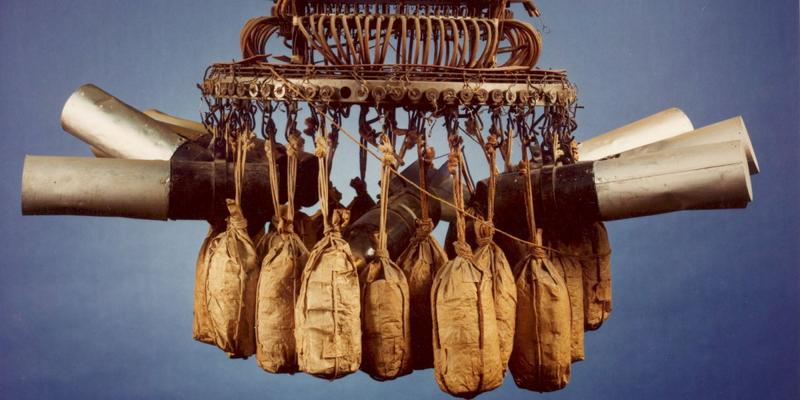The Day World War II Literally Hit Home For the People of Omaha, Nebraska
By | June 29, 2022

Omaha, Nebraska, located nearly smack in the middle of the United States, seems like an unlikely place for an attack by the Japanese during World War II, but that is exactly what happened on the evening of April 18, 1945. On that quiet evening, an explosion rocks the skies above the Omaha neighborhood of Dundee, the shock of the area residents. The explosion was caused by a Japanese fire balloon, an airborne bomb filled with hydrogen. As it turned out, Omaha wasn’t the only target of these Japanese bombs.
World War II
With, of course, the notable exception of the 1941 bombing of Pearl Harbor in Hawaii, the United States saw very little fighting on its own soil during World War II. By 1945, the tide was turning, and the Japanese military was beginning to sense that the end was near. As a last-ditch effort to cause chaos, fear, and destruction, the Japanese launched about 9,000 balloons over a six-month period of time. The balloons each carried a bomb, ranging in size from 11 to more than 30 pounds. For the Japanese, this was an experimental maneuver. They were not sure how far the winds would carry the balloons, nor when or if the bombs would explode.

Hoping to Incite Fear
Military leaders in Japan had high hopes for the fire balloons. They did not know for certain where the various balloons would end up. They wanted to feed into the fear of the randomness of foreign attacks. Additionally, they hoped that the news coverage of random fire balloon explosions would create widespread panic and terror among civilians, which in turn, would help their cause. That plan, however, backfired on the Japanese. The United States Office of Censorship caught wind of Japan’s fire balloon plan and sent a memo to every newspaper and radio station in the country. The memo asked them to refrain from reporting on Japanese fire balloons should one of them explode or land in their community. The media outlets in Omaha did not report on the fire balloon incident in Dundee until after the war was over.

Coming to America … and Nebraska
Of the 9,000 or so fire balloons that were launched, about 300 of them made it to the United States. Drifting high on the wind, several of these balloons made it quite a way inland so the balloon that arrived in Omaha on April 18, 1945, was not unique. The night that the bomb exploded in Omaha, residents of the Dundee neighborhood reported hearing what they thought were fireworks exploding in the sky. Others saw a bright flash of light. Fortunately for the people of the Dundee neighborhood, the bomb was still high in the air when it went off. It caused no damage or injuries. It only startled a few people and made them even angrier at the Japanese for invading their quiet, midwestern existences, far removed from the ravages of war.
Not So Lucky
Japanese fire balloons were found far beyond Nebraska. In fact, they had been discovered in half of the U.S. states, as well as in Mexico and Canada. For the most part, they fire balloons detonated in the air, so they did not cause damage or injuries on the ground. About two weeks after the Omaha fire balloon incident, another Japanese fire balloon landed unexploded in rural Oregon. A woman and five children happened upon it in the woods and were tragically killed when it exploded. Long after the war ended, people in North America continued to find fire balloons or the remains of exploded fire balloons that went undiscovered. The most recently discovered Japanese fire balloon was found in 2014 in Canada.